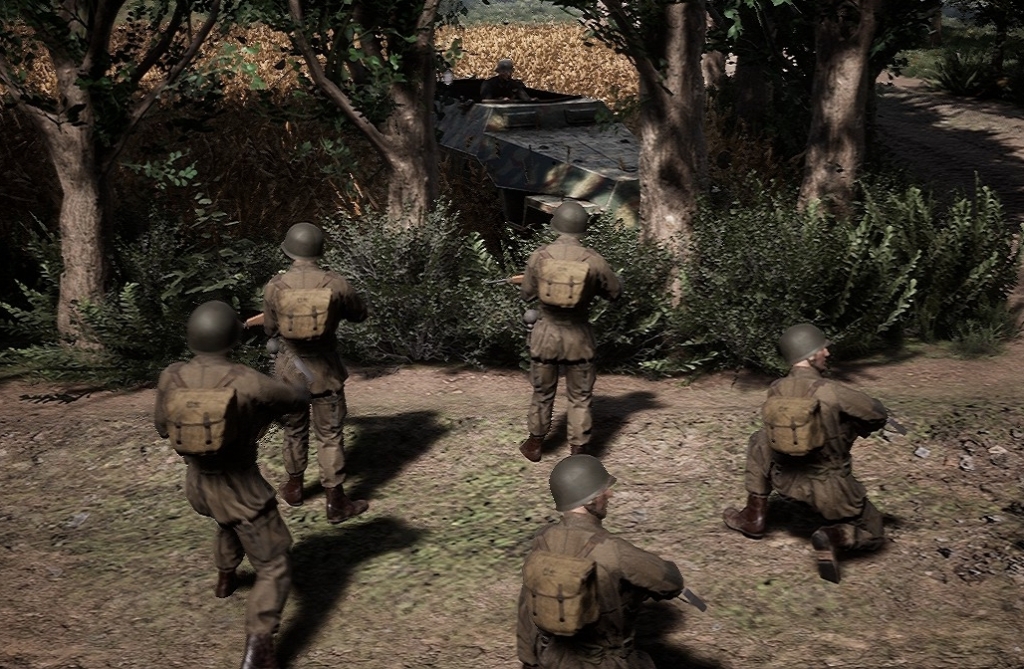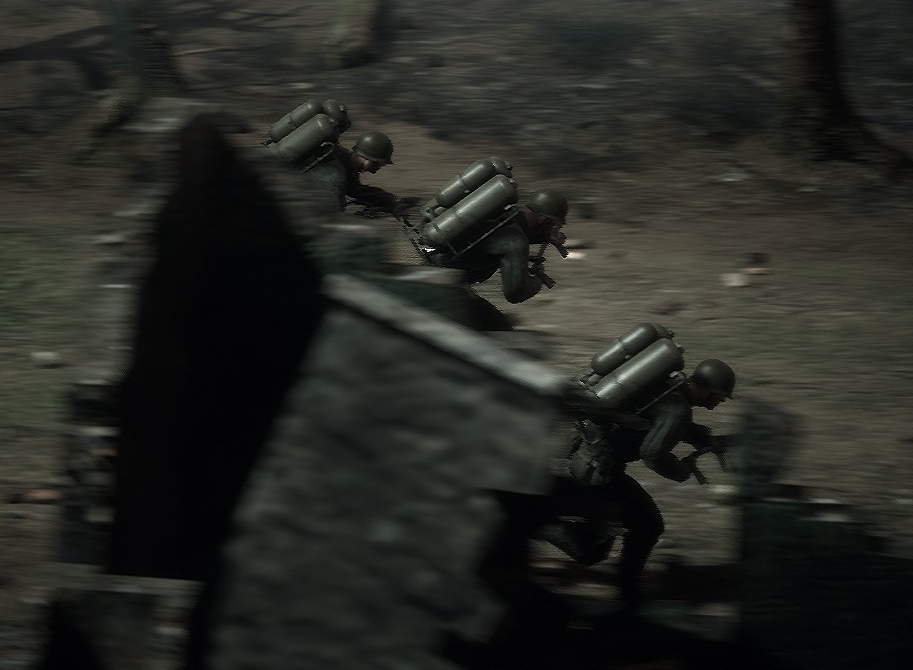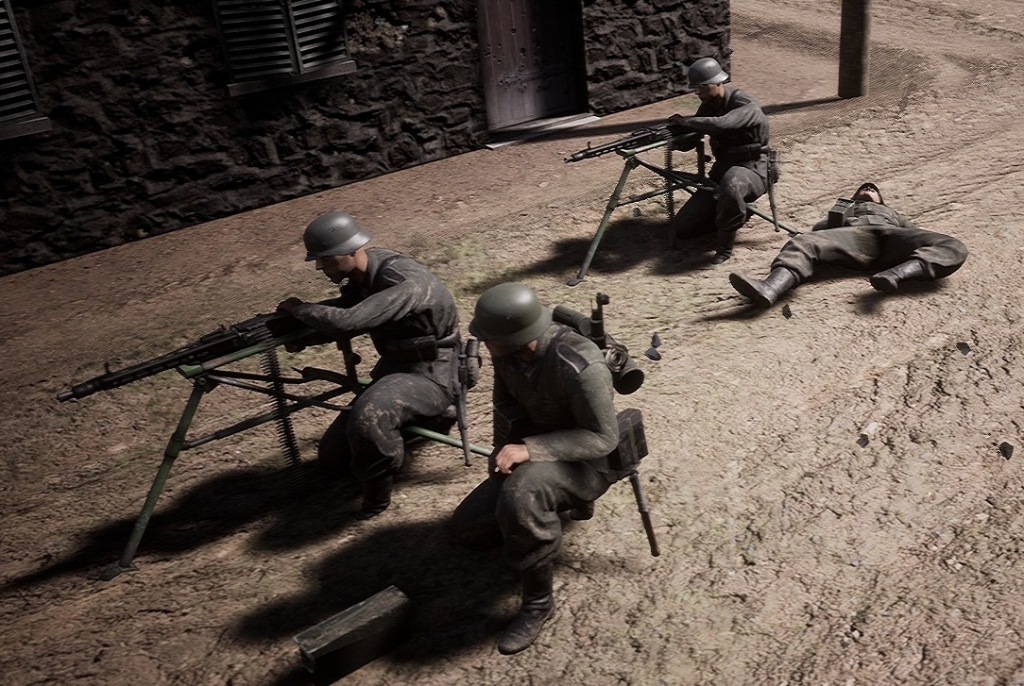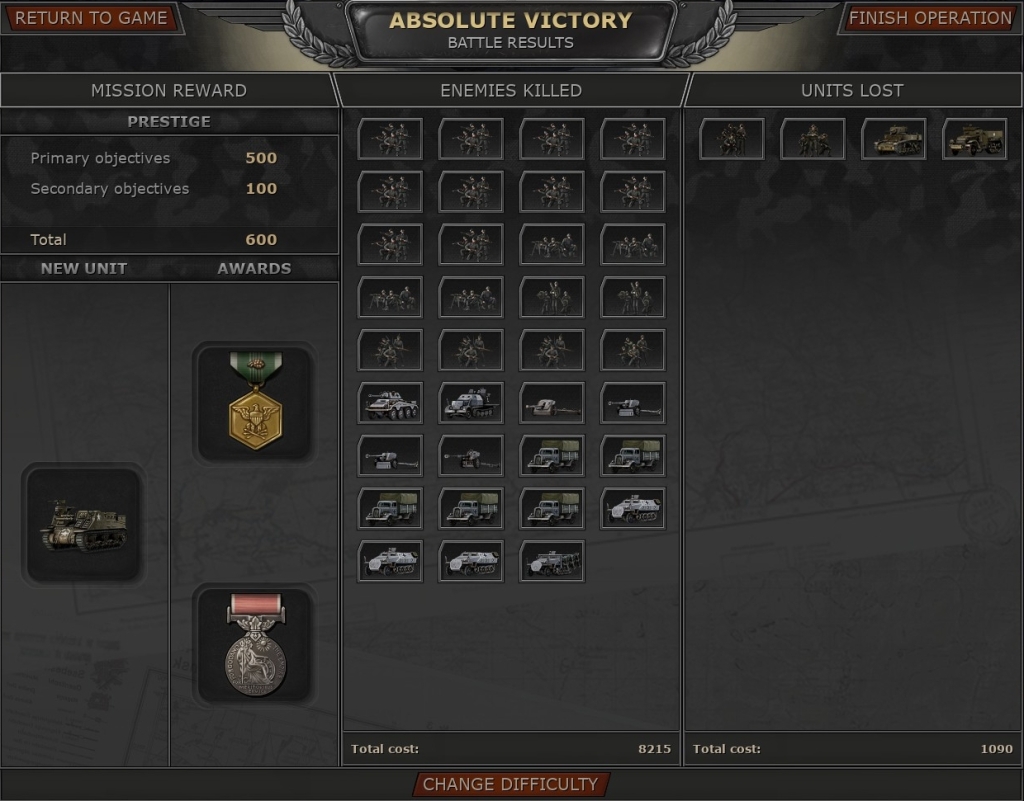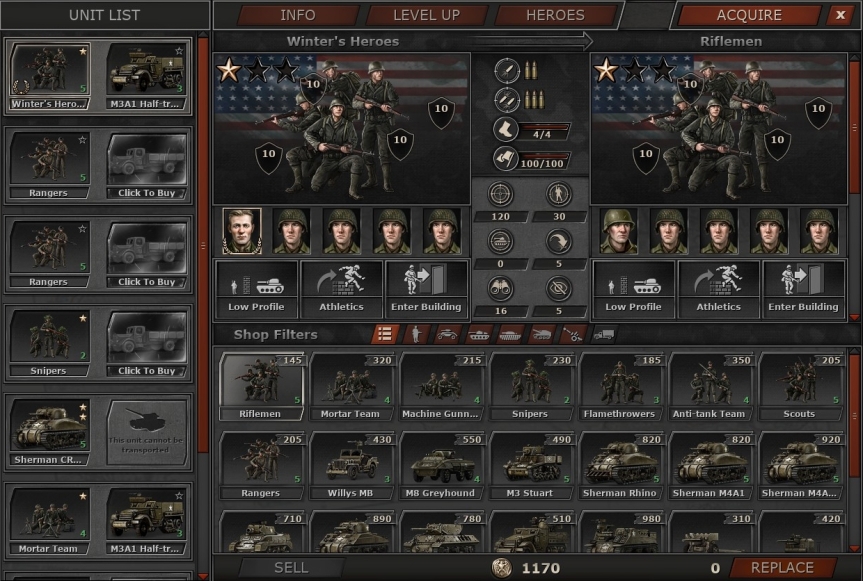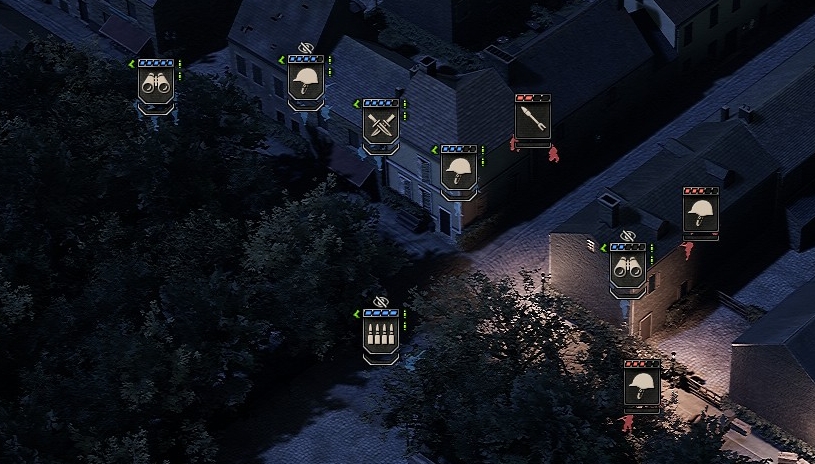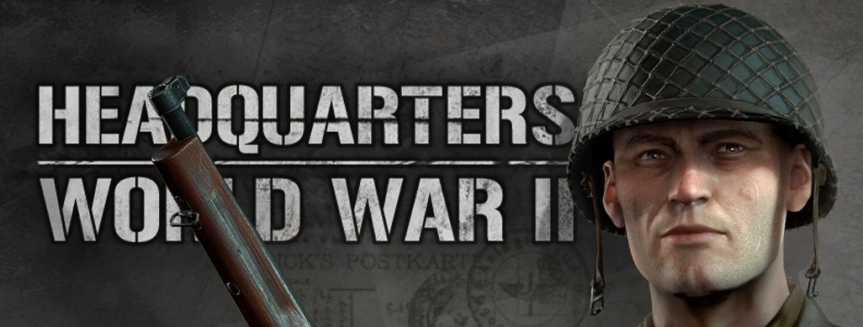
I’m not too into the boardgame style of wargames, so I can’t give any kind of expert opinion, but from what I have played so far, Headquarters: World War II is an entertaining title if you enjoy tactical games and turn-based action. I have not yet completed any of the campaign scenarios. However, I’m on my way to finishing the American one, which has given me enough experience to comment on the game. Let’s start with the story.
It’s WWII alright
As expected, there isn’t too much of a story here. The American campaign starts on the beaches of Normandie with you having to force your way inland to eventually fight at the Battle of Brest. There are three campaigns, the American, The British, and the German, and all the campaigns revolve around the 1944 invasion of France – with the German scenario focusing on defense, instead of attacking. However, what makes the campaign more interesting than say a random skirmish mission is that you will be presented with optional objectives during tactical gameplay that come with extra narrative flair and rewards. These optional tasks are more than just flourish though, since completing these gives you extra officer skill points to use for your core task force.
See, the campaign is more than just a set of random missions stringed together. You will have a core group of units, on top of the selection the mission gives you. The core fighting units you can assemble however you want (if you have the points for it). More than that, the game also has an officer skill system to give you an edge during combat and to make your army suitable for your style of combat. The secondary tasks are great since they reward extra officer points to those who put in the additional effort. It’s a perfect incentive for making the optional missions attractive and fun to go after. The talent tree/officer system is separated into three tabs – tanks, infantry, and artillery. I went down the infantry tab that makes all my infantry better, regardless of what type, and from what I can tell in combat, it was a well-worth investment.
Tinkering and planning around your task force is very fun and reminds me a bit of X-com before heading out on a mission. It does not have the same level of detail, but there are a lot of things to consider before departing. Losing units doesn’t seem to be permanent, as they get replaced and they seem to keep their XP level. However, you do get punished on the general point system, which is used to buy and replace units. While you can change out the units for other types, there seems to be no way to go less or more than what you have. But for infantry units, you can use these points to provide wheels for your platoons if you so like in the form of half-tracks or trucks. Good if you want to create a fast mechanized force, or just want some extra firepower as the machine guns on top of the H3AI half-track can be deadly.
Tactical combat
I like the management part. What becomes a bit more iffy is the tactical combat where you actually have to face down your enemy. The iffy part comes from me not liking abstract fighting, but usually it highly depends on the game. At the start, I wasn’t too impressed. Fighting on the beach once again, a thing I have done thousands of times before didn’t feel too exciting. And the open sandy dunes are not exactly the best way to showcase Headquarters: World War II, so I got to wonder why they started with this. This demoralized me a bit, but, luckily, beyond the beaches, things turned around quickly for the better.
Every unit can move and fire twice, and if the unit doesn’t fire, that action will be used as overwatch. It’s an easy system to understand and use. All platoons come with morale and individual units that make up the squad. Losing men in a squad will hamper the effect of that unit, for example, a tank might lose its secondary attack action, or if the driver dies the tank will lose action points for movement. If all the men in a platoon are wiped out, that unit will be destroyed and is now gone from tactical combat. A squad can also disappear from combat through routing, and that happens when its morale fails. Every attack does some kind of morale damage, even if that attack misses. However, it should be noted that this depends on what is attacking whom. Scouts spraying a tank with sub-machine gun fire will do very little to the tank, both in damage to the structure, and the morale. But in general, each attack will do morale damage. This can route enemies, get them displaced, or just demoralize them to the point they won’t attack back.
Its gameplay consists of a lot of these systems, and I think it works well for combat. It also makes it damn fast for being a turn-based game. There are a lot of other variables to the combat too, of course. Like cover and elevation. Getting caught out in the open by a machine gun will make short work of a squad faster than you can say “get down”. As a rule, grunts will always perform better in the cover of a house, than in the open ground. Camouflage also plays a big role, as ambushes are a great way to get tank kills with regular old infantry squads. All units come with different values, with snipers being almost invisible, making them hard to spot with anything else other than infantry or scout units. They die very easily when spotted, though!
Another crucial thing that should be mentioned, is that on top of the “overwatch” system, platoons will retaliate up to two turns when targeted – if they can, that is (range is one issue). This means that it’s never truly safe to attack an infantry squad with another unless you got the upper hand by doing an attack from “camouflage”, aka doing an ambush. Units can’t retaliate from ambushes, but from regular attacks that they can see coming, they do. This is another aspect that I found enjoyable since it speeds up the combat, as you will be controlling a lot of units at times, and so will the enemy. It quickly minimizes any stalemates and makes for rewarding, yet, risky gameplay to consider. It has its moments of frustration though. Especially when it says you have a 90% chance to eliminate an opposing squad, and still, your team totally whiffs it. Then for the enemy to wreck your attacking squad in return when retaliating. Total FUBAR! But that’s war for you.
Look & feel
The visual look and feel of Headquarters: World War II is great. It has plenty of detail for being a top-down tactical game. Often when shooting or moving, the game will move in and provide a close-up look at the action. It doesn’t always look clean, but the addition is a welcomed one still. If you don’t like watching these “cutscenes” you can always click past it with a right-click. And I’m glad for that because while it looks cool, I don’t have to see my mortar squad move ten meters down a road all cinematic-like. The presentation overall is top-notch. The UI is easy to understand, and already after an hour or so, I felt pretty at ease with everything. And that goes both for management and tactical combat. The voice acting is suitable for what is being presented, and the music is typical for a WWII game. However, I do feel that the soundscape is a bit limited, both when it comes from direct action like blasting stuff, and the map as a whole. There is very little background sound to give that extra immersion. Sound is probably my biggest issue with the game. There is very little of it, and most of it sounds stock. The British machine gun sounds exactly like the German one. A thing that really shouldn’t be.
In conclusion
I didn’t think Headquarters: World War II would be my type of game, but the snappy tactical combat with the fun management part has won me over. The campaign seems well-paced also with interesting secondary objectives that truly test your skills. As mentioned, the best part about these additional tasks is that they provide an incentive to do better, since they reward you in different ways. Very enjoyable system. Now, Headquarters: World War II has multiplayer too, for those who enjoy that. I’m not a multiplayer kind of guy anymore, but I thought it should be mentioned for those who like to hone their tactical knowledge by defeating others online.
All in all, I recommend the game, but I do think it might be a bit pricey for what you get. It’s almost 40 euro for me, which is on the deep end for three campaigns all set in the same period of WWII. The publisher provided me with a review code, so I didn’t have to buy it myself, but for that price, I’m not sure I would have.
Thanks for reading.
/Thomas
– Review copy provided by publisher –
